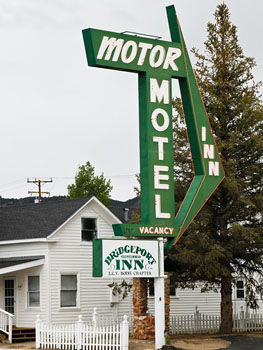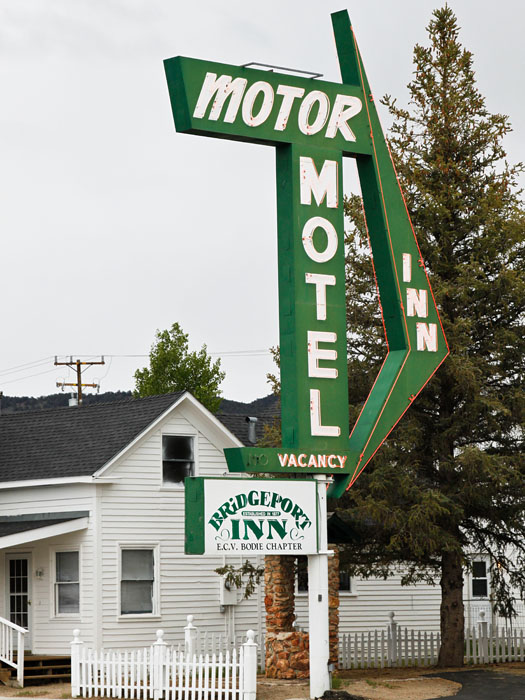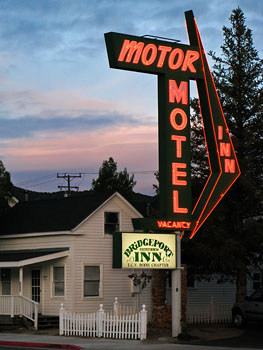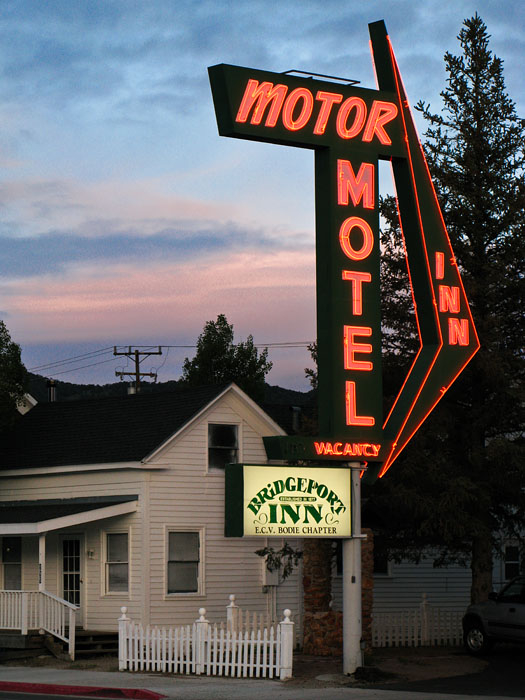I've been in rapidly changing light the last few days. I could literally stand before a scene at Mono lake, take a picture every two minutes, and have five completely different images without ever moving a step. I had a similar experience in Bodie when the early morning was clear providing vivid colors, then as a storm moved in, the light completely flattened out.
But you don't have to be on a road trip to take into account how the passage of just a few hours can completely change a shot. I have two examples for you to consider. The first shot, captured in Bridgeport, was recorded at 4 pm on June 6 with a Canon Rebel T1i. I love retro signs, and some of the motels in the Eastern Sierra have that great 50s look that I'm such a sucker for. I always make sure I go street shooting, even if the main street is only a half mile long.
Then around 8 pm, I noticed that the sunset had completely changed the appearance of this little Eastern Sierra town. This time I grabbed the Canon G9 and went for another walk, photographing again some of my favorite landmarks.
As you can tell from the examples, the difference is night and day. This effect is something I try to keep in mind, whether on the road or in my home town. These images aren't exactly Monet's haystacks, but I'm glad to have them in my library.
Top photograph captured with a Canon T1i, 24-105 mm f/4 L zoom, ISO 200 at f/8. The bottom image taken with a Canon G9, ISO 100 at f/4. Both pictures processed in Adobe Camera Raw 5 (part of Photoshop CS4). For more information about image processing with CS4, check out my book, The Photoshop CS4 Companion for Photographers.
-















